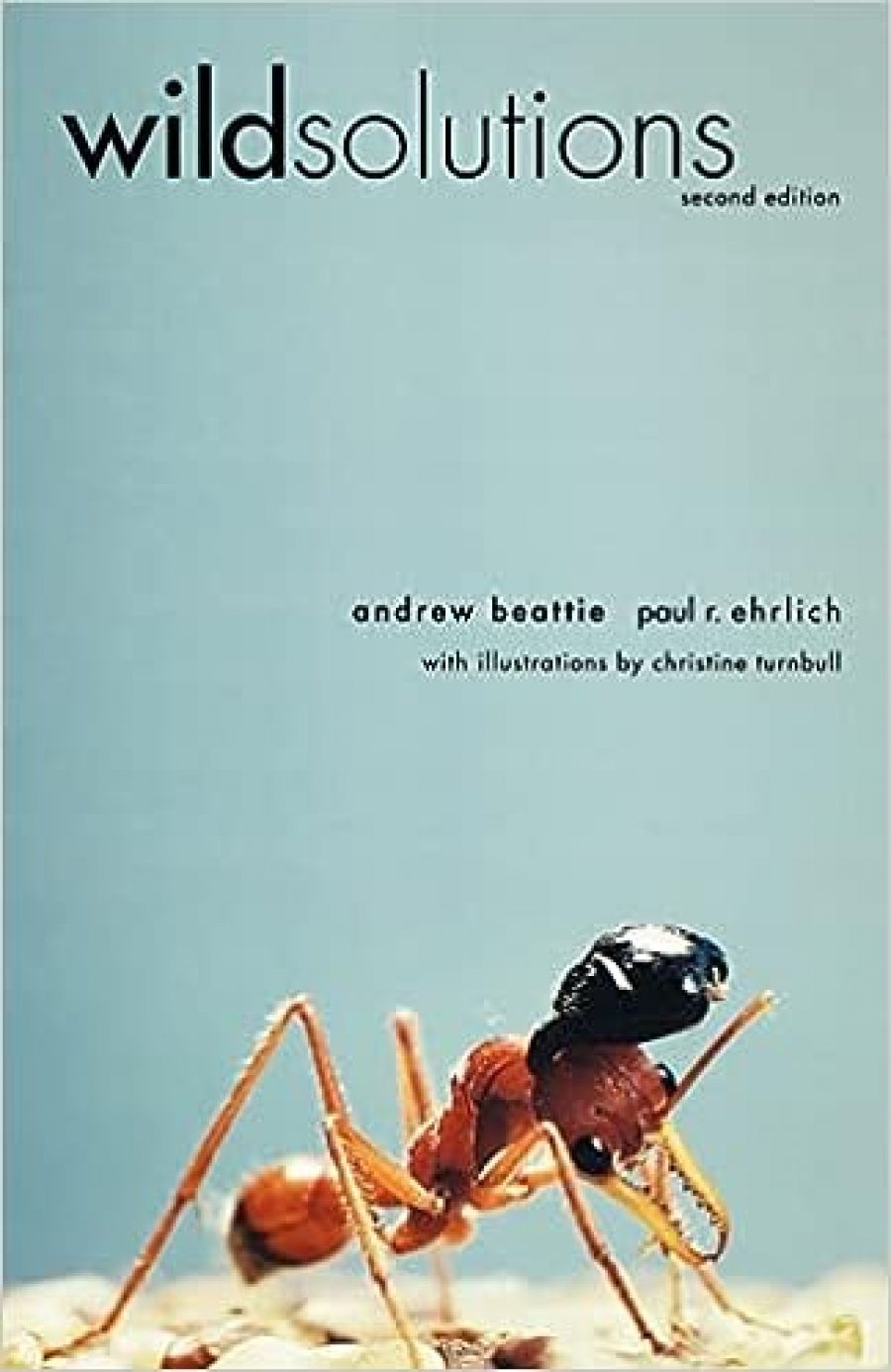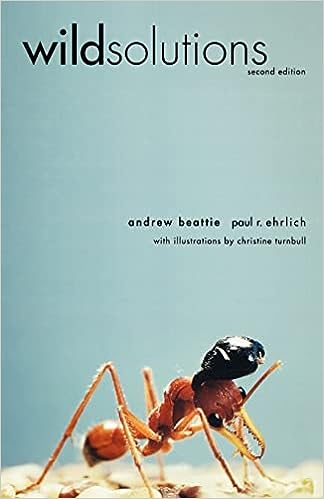
- Free Article: No
- Contents Category: Environment
- Review Article: Yes
- Article Title: Counting the Losses
- Online Only: No
- Custom Highlight Text:
We demand difference and variety in our lives – in the food we eat, in our friends, in our distractions and aversions. And we know that diversity is desperately needed in the biological world. There is debate, however, on how much is enough, and where the balance lies, and it’s hard to judge because we remain ignorant about natural processes.
- Book 1 Title: Wild Solutions
- Book 1 Subtitle: How Biodiversity Is Money in the Bank
- Book 1 Biblio: MUP, $49.95hb, 239pp
- Book 1 Cover Small (400 x 600):

Certainly, the delights of diversity have led to many an ecological disaster, but as a farmer raising Herefords, Angus and Merinos it would be hypocritical of me to pull up imported plants. In any case, the debate on biological diversity now has a different focus: it has become microscopic, urgently concerned with bacteria, viruses and fungi.
Did Beattie and Erhlich choose the subtitle, ‘How biodiversity is money in the bank’, because cash is the only way to inspire interest? Is the world’s collective conscious so crammed with bad feelings about rivers, oceans and wood-chipped hills, that money is the only motivator?
Forget the profits (few of us will see them anyway) and count the losses. It’s not only those working in science, environmental areas or rural Australia who should be worried about the issue. We all need a basic understanding of the subject as the world accelerates into the biotech-genetic era.
The tone of most environmental books is dour, even catastrophic. Indeed, the earlier writings of Paul Erhlich are notorious for their apocalypticism. No televangelist is as terrifying in his prophesies. In contrast, Wild Solutions remains comparatively calm until the last three pages when the collaborators revert to words of fire in case we haven’t been paying attention: ‘All over the world forests, soils, and fisheries are in decline. We are even changing the climate for the worst.’ The problem is caused by ‘Overpopulation, Overdevelopment, Overconsumption’. The authors’ hope is that the concept of natural capital will be accepted before its value is destroyed.
The language is as simple as the subject matter is awesome. We’re reminded that the planet is little understood, that nature remains mysterious and that ‘the majority of species on earth are yet to be discovered’. Replacing descriptions of attractive flora and enchanting fauna, tales of microscopic life loom large. ‘One gram of topsoil (enough to cover your fingernail) normally contains between a hundred million and a thousand million bacterial cells.’ And it’s not only without, it’s also within. ‘Our small intestine holds about a million microorganisms per gram, and our bowels about a billion per gram.’ Let’s hear it for bowel diversity! Our ‘human cells are outnumbered about ten to one by the creatures that inhabit us!’ Our penchant for squirting ourselves and our surroundings with chemicals, amounts to an onslaught that can reduce our immune response. Moreover, as the world continues to pile up waste, it needs these little critters to help clean up the mess.
The book, a brief 239 pages, dramatised with exceptional pen drawings by Christine Turnbull (herself a wild solution to the reader’s lack of ready access to a microscope), recaps familiar ecological scenarios where human intervention has overwhelmed the natural world, i.e. bunnies, prickly pears, algal blooms, toads, DDT, and toxicity in New York City’s water supply. Conversely, we are regaled with revelations about ants’ glands secreting antibiotics and a moth species that hungers for koala dung. The wild solutions of the title come thick and fast with biodiversity promising answers to our mounting problems, but only if diversity is allowed to reign. In the biological world, less is most emphatically not more.
Each chapter concludes with solutions that nature, with a little help from science, has up its sleeve. For example, big-building architects are using the inner workings of termite mounds as an inspiration for improved air-conditioning.
There’s only passing mention of genetic engineering and the argument geneticists tout: ‘Why worry about diversity when we’ll simply engineer species if and when they’re needed?’ The authors correctly suggest this subject deserves a book of its own. I hope they write it, and soon.
Wild Solutions works both for the novice and for those further down the path of ecological knowledge. But it didn’t give me much help with my ideological conflicts in the garden. Do my weeds contribute to the world of biodiversity, or are they just weeds?
It’s good to see that Erhlich has rediscovered optimism. Australia’s Andrew Beattie is having a good influence on him. One hopes that the book is widely read by those in a position to influence or implement policy in farm plans, town plans and the like, for there are chasms between the purity of science and its real applications.


Comments powered by CComment